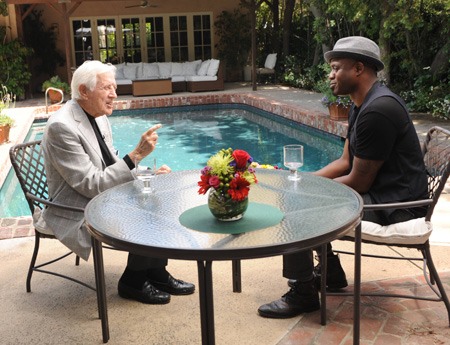Net-Net, More Diginets Are Coming

Every time conventional wisdom says the diginet landscape is saturated, another player or two comes along, ideally with a fresh batch of programming and a built-in distribution system. Most recently it was Decades, a classic TV network launched on May 25 by CBS Television Stations and Weigel Broadcasting, followed by Buzzr, the game show network from Fremantle Media that launched June 1.
Is there room for more multicast channels—particularly those showing decades-old series?
Neal Sabin, Weigel vice chairman, says yes. Decades, which features the Bill Kurtis-hosted, this-day-in-history program Through the Decades, elicited 180 emails during its opening weekend—around 95% of them positive, says Sabin. One new viewer who identified himself as “Allen” from Roanoke, Va., emailed Decades: “Finally a network on free TV worth watching.”
Sabin has seen it all on the diginets front since he led the launches of This TV in 2008 and Me-TV in 2010. “Viewers don’t usually write when they’re happy,” he says. “One hundred eighty emails says Decades has resonated with people.”
What’s New With You?
Key to thriving in the multicast world these days is offering something unique to viewers. For Justice Network, which launched in January, it’s working with affiliate partners to customize content around local Amber Alerts. For Buzzr, it’s linking old and newer media by having current media personalities hosting classic game shows on YouTube, including FamilyFeud (hosted by Adam Lustick) and Password (Steve Zaragoza). “That allows us to bring in and expose a whole new generation of viewers to this type of content,” says Ron Garfield, general manager and executive VP of Buzzr.
Both Decades and Buzzr offer unique takes on freshening up vintage content—perhaps even more of a necessity with the libraries of available shows picked ever thinner with each new channel. Diginet chiefs speak of veritable bidding wars for the few remaining established shows on the market, and even demand for programs that lack long runs and are not all that vintage. “It’s like not anyone said, there’s real demand for Spin City,” grouses one diginet chief.
Broadcasting & Cable Newsletter
The smarter way to stay on top of broadcasting and cable industry. Sign up below
It’s become de rigueur for studios to monetize their libraries by launching networks, such as NBCUniversal hatching Cozi TV (Cozi is set to debut Baywatch on Aug. 1) and Sony Pictures Television launching getTV. “It’s getting harder and harder [to obtain programs],” says David Leach, president/ CEO of Luken Communications, home of Retro TV, country channel Heartland and other diginets. “People used to license their libraries; now they are running networks.”
Be Original
Within the diginet world exists a whole range of business models, such as getTV and various Katz Broadcasting nets, including Grit and Escape, paying station partners for carriage, and the reruns vs. originals dilemma. Launching an original show or two, much less a full slate of them, is tricky business. A network needs a hefty marketing budget to vault the homegrown programming out of obscurity, and viewers expect HD production. Sean Compton, president of strategic programming and acquisitions at Tribune Media, says the formula does not work for Trib’s Antenna TV and This TV. “Viewers know what they get when they tune in any time of day,” he says. “We really don’t want to break that format.”
But similar to the way cable networks ultimately established their brands not with acquired content but through original productions, several diginets are exploring those avenues. Buzzr would “love to be able to create originals,” says Garfield; being owned by an established production company certainly helps on that front. Justice airs three 30-second interstitials related to fugitives, missing children and personal safety tips each hour. Steve Schiffman, Justice CEO, would like to step it up to the original series business. “We’re still getting our training wheels off, but it’s very much in our plans,” says Schiffman, former National Geographic Channels president.
It’s anyone’s guess what’s next for the diginet world. The seemingly saturated market may see some contraction or even acquisitions. And the upcoming spectrum auction will likely make multicast real estate even tougher to secure. Then again, the trend in over-the-air viewing and consumers cutting the cable cord could bode well for the junior broadcast nets. Instead of lamenting the arrival of another competitor, some network operators feel that more worthwhile OTA choices are ultimately good for all of them.
“I think there will be a few more, whether we feel there’s room for them or not,” says Luken chief Leach. “We need enough diginets in each DMA so that consumers say, ‘I don’t need the [cable] bundle.’”
Michael Malone is content director at B+C and Multichannel News. He joined B+C in 2005 and has covered network programming, including entertainment, news and sports on broadcast, cable and streaming; and local broadcast television, including writing the "Local News Close-Up" market profiles. He also hosted the podcasts "Busted Pilot" and "Series Business." His journalism has also appeared in The New York Times, The L.A. Times, The Boston Globe and New York magazine.

